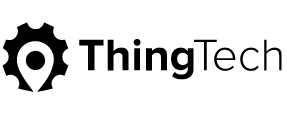Evolving Amidst Misfortune: Finding the Right Time to Adopt EAM

Photo Credit: Unsplash
Unravel the history of the Internet of Things (IoT) and you’ll discover that many solutions provide value only when something goes wrong. The IoT, for example, can alert transit agencies to speeding vehicles or parts that need replaced. Coincidentally (or perhaps causal), it is operational pain, not excellence, that oftentimes acts as a trigger for IoT implementations. That’s a sobering reality for a nation still trying to grasp “unequivocal” evidence of climate change.
Faced with continuous pressure on safety, maintenance budgets, and transportation infrastructures, the Department of Transportation (DOT) established new guidelines for transit agencies that receive Chapter 53 funds. Under the Fixing America’s Surface Transportation (FAST) Act, a transit asset management (TAM) plan must be put in place for maintaining assets within a transit network by October 20, 2018. Because like owning a personal vehicle, preventative care extends the lifecycle of your asset, and over the long-run is less costly than repairs.
So what’s the right time to implement enterprise asset management (EAM)? Apparently when the federal government issues a mandate that requires transit asset management. The FAST Act is driving EAM adoption in mass transit. At the federal level, the DOT is faced with improving safety, surface infrastructure and public transportation reliability.

ThingTech’s EAM solution solves these transit asset management challenges
As a result, state and local government was pushed towards digital transformation. Meeting TAM rule compliance is critical, but a need also existed for increased asset utilization and optimizing parts/equipment ordering to reduce the costly expense of last minute shipping and repairs. For workers who perform asset management and maintenance, EAM makes their jobs easier by automating maintenance record-keeping for your fleet, facilities, equipment and infrastructure.
IoT solutions such as EAM make it possible to meet TAM plan requirements with real-time visibility and workflow automation. But the IoT can do so much more than build efficiency into the structure of transit maintenance programs. That’s why more agencies pursing greater value in asset management choose our ThingX™ Platform.
Moving away from manual processes will lead to proactive, preventative maintenance for assets that are valuable and mission critical. The untapped value of EAM, however, involves using APIs to enable IoT ecosystems, which pool data and provide a holistic view of operations.
Imagine, for example, combining data points across maintenance, fleet tracking, engine diagnostics, driving behavior, route dispatch, inventory, work order management, and weather conditions. Now, let’s hand over this information to a machine with artificial intelligence, which can monitor, store, analyze, and learn from the data, quickly predicting asset performance across a spectrum of success and potential failure. Can see the value of EAM powered by IoT platform services?
The challenges of public transportation demand real-time insight that can be transformed into useful data that maintenance teams can act on. The TAM rule demonstrates America’s commitment to better, safer roads. Empowering transit agencies with proactive, intelligent, scalable technologies will provide them better access to information. And almost immediately, these deployments will yield improved responsiveness to emergencies and safety risk mitigation.
ThingTech is helping transit agencies turn TAM compliance into opportunities to achieve digital transformation across state and local government. Even better, transit agencies that adopt EAM technologies will make a positive impact on the environment and smart city projects. Changing the future happens today. Contact us anytime to discuss your enterprise asset management needs, or to schedule a free demo.
